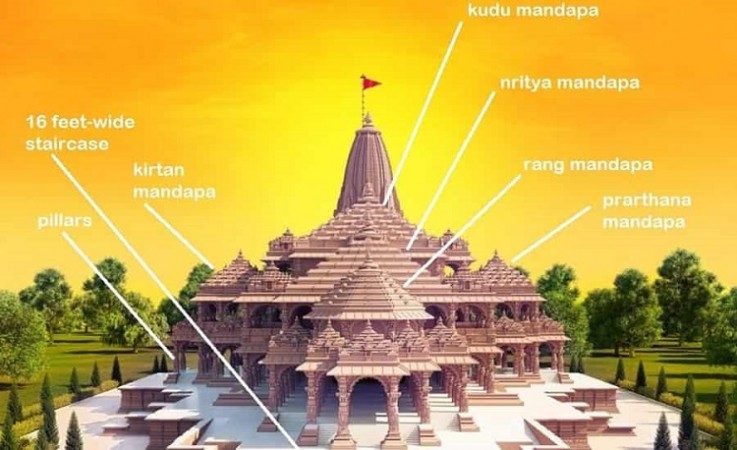
The Ayodhya Ram Temple set for its grand inauguration soon, is drawing attention for its design and facilities. Prime Minister Narendra Modi is scheduled to perform the consecration ceremony on January 22, marking the installation of Lord Ram's idol in the temple's sanctum-sanctorum, known as garbha-griha.
The preparations for this significant event are in full swing, with tight security measures in place. Devotees can seek blessings from Lord Ram starting January 24. The Shri Ram Janmbhoomi Teerth Kshetra Trust has outlined key features of the temple ahead of its inauguration:
Design: The temple follows the traditional Nagar architectural style, seen in its tall, pyramidal towers called shikharas, popular in regions like Rajputana, Malwa, and Kalinga.
Dimensions: The temple spans 380 feet in length from east to west, 250 feet in width, and stands 161 feet tall.
Structure: It's a three-story building, each floor being 20 feet high. The first floor houses Shri Ram Darbar, while the main sanctum features a child form of Lord Ram.
Pillars and Gates: The temple has 392 pillars adorned with carved statues and 44 gates for entry and exit.
Facilities: There are five pavilions for various functions, along with ramps and lifts for the specially-abled and elderly devotees. A 73-meter-long wall surrounds the temple, with dedicated corners for specific gods.
Other Temples: Small temples dedicated to saints related to Lord Ram, like Maharishi Valmiki and Mata Shabari, will be part of the complex.
Amenities: The temple will have a medical facility capable of serving 25,000 people, clean bathroom facilities, and a focus on environmental conservation with 70% of the area designated as green space.
Construction and Costs: The temple's estimated construction cost ranges from Rs 1,400 crore to Rs 1,800 crore. The trust managing the temple's construction is receiving donations for this purpose.
The temple complex has undergone extensive renovation, including the refurbishment of an ancient Lord Shiva temple. Interestingly, the temple's construction doesn't include iron or concrete on the ground. It utilizes Roller Compacted Concrete (RCC) for its foundation, aiming to protect against soil moisture.
Furthermore, the temple is equipped with independent facilities such as water treatment plants, a power station, and a sewer treatment plant to minimize external resource dependence.
The Ayodhya Ram Temple combines traditional design, modern facilities, and environmental consciousness, poised to become a significant religious landmark upon its inauguration.
From Ramlala's Idol to Temple Design and Pillars: Discover 10 Special Features of the Ram Temple
Ayodhya's Ram Temple Ceremony: This Statue of Lord Ram Chosen for Installation
Uttar Pradesh Gears Up for International Kite Festival in Ayodhya